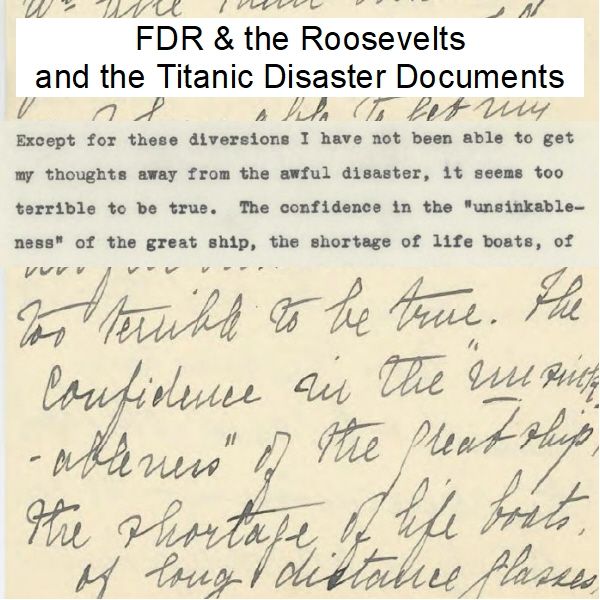
Description
Roosevelt Family and the Titanic Disaster
1912
- April 12: Franklin Delano Roosevelt (FDR) is in Panama, observing the construction of the Panama Canal.
- April 14 (Sunday): The White Star Line’s luxury steamer RMS Titanic strikes an iceberg during its maiden voyage.
- April 14 (Sunday): The RMS Titanic sinks in 2 hours and 40 minutes, approximately 370 miles southeast of Newfoundland.
- April 14 (Sunday) – Late Night: Initial reports in Albany, New York, where Eleanor Roosevelt is, suggest all Titanic passengers were saved. Later reports clarify the extent of the disaster.
- April 15: Franklin D. Roosevelt writes a letter from Panama to his mother, Sara, asking her to save newspapers about the Titanic disaster because he has limited details.
- April 15 – April 24: Sara Roosevelt and Eleanor Roosevelt correspond with FDR, providing details and reactions to the Titanic sinking.
- Within the period of April 15-24: Sara Roosevelt replies to FDR’s letter, expressing her upset over John Jacob Astor’s death and mentioning other prominent fatalities like Mr. Millet, Mr. Widener, and Major Archie Butt, while also acknowledging the tragedies in steerage.
- Within the period of April 15-24: Eleanor Roosevelt writes to Franklin, expressing her horror at the “appalling and awful” disaster, particularly for the surviving women who might have preferred to die with their husbands and sons, and her relief that Franklin is “out of the track of icebergs.”
- Undated (after sinking): The British ship, RMS Carpathia, rescues 710 survivors from lifeboats and transports them to New York.
1945
- April 12: Franklin Delano Roosevelt dies and is buried at the Roosevelt family home in Hyde Park, New York, exactly 33 years after he was in Panama during the Titanic disaster.
Cast of Characters:
- Franklin Delano Roosevelt (FDR): (1882-1945) At the time of the Titanic disaster in April 1912, he was a 30-year-old New York State Senator. He was in Panama observing the construction of the Panama Canal when the ship sank and wrote to his mother requesting newspapers about the event due to a lack of detailed information. He died on April 12, 1945, and was buried at his family home.
- Sara Roosevelt: Franklin D. Roosevelt’s mother. She communicated with her son about the Titanic disaster, expressing her distress over the deaths of prominent passengers like John Jacob Astor and others, and acknowledging the tragedies among steerage passengers.
- Eleanor Roosevelt: Franklin D. Roosevelt’s wife. She was in Albany, New York, at the time of the Titanic disaster. She wrote to Franklin, conveying her shock and grief over the catastrophe, particularly for the women who survived.
- John Jacob Astor: A prominent American and first-class passenger who died in the Titanic sinking. His death greatly upset Sara Roosevelt.
- Benjamin Guggenheim: A prominent American and first-class passenger who died in the Titanic sinking.
- Major Archie Butt: A prominent American and first-class passenger who died in the Titanic sinking. He was known to the Roosevelt/Delano families and specifically mentioned by Sara Roosevelt.
- Isidor Straus: A prominent American and first-class passenger who died in the Titanic sinking.
- Mr. Millet: A person known to the Roosevelt/Delano families, who died in the Titanic sinking, mentioned by Sara Roosevelt.
- Mr. Widener: A person known to the Roosevelt/Delano families, who died in the Titanic sinking, mentioned by Sara Roosevelt.
- Rosy: An individual mentioned by Sara Roosevelt as being “much upset over poor Jack Astor’s death and spends most of his time at Mr. Ledyard’s office.” Their full identity or relationship to the family is not specified beyond this.
- Mr. Ledyard: An individual whose office “Rosy” frequented after John Jacob Astor’s death, as mentioned by Sara Roosevelt. Their full identity or relationship is not specified.
FDR & the Roosevelts and the Titanic Disaster Documents
50 pages of handwritten documents and transcripts, dating from April 15 to April 24, 1912, reflecting how FDR and his family members reacted to the sinking of the Titanic.
During its maiden voyage, on Sunday, 14 April 1912, the White Star Line’s luxury steamer RMS Titanic struck an iceberg and sank in 2 hours and 40 minutes, 370 miles southeast of the Canadian province of Newfoundland. Among the 1,500 people who died that night were several prominent Americans, including John Jacob Astor, Benjamin Guggenheim, Major Archie Butt and Isidor Straus. 710 survivors of the wreck were rescued from lifeboats and carried to New York by the British ship, RMS Carpathia. Members of both the Roosevelt and Delano families knew several of the first-class passengers who died.
On April 14, 1912, 30-year-old Franklin Delano Roosevelt was a New York State Senator. At the time of the sinking, FDR was in Panama observing the construction of the Panama Canal. Exactly 33 years later, he would be buried at the Roosevelt family home in Hyde Park, New York, after dying on April 12, 1945
Highlights in this collection includes a letter from Franklin D. Roosevelt written in Panama to his mother Sara, he asks her to save newspapers about the disaster because, “We know practically no details, only scraps here and there. I am counting on your saving all the papers for every day I am away…” She replied, “Rosy is much upset over poor Jack Astor’s death and spends most of his time at Mr. Ledyard’s office. Mr. Millet, Mr. Widener, Major Archie Butt and Mary, others were well known but oh! the tragedies in the steerage as well.”
At the time of the disaster Eleanor Roosevelt was in Albany, New York. She wrote to Franklin, “The news of the Titanic disaster came in the morning, but the reports were that all were saved until quite late at night. It is so appalling and awful and I think almost worse for the many women who were saved and who would probably far rather have gone down with their husbands and sons. I am so glad you are at least out of the track of icebergs.”
Related products
-
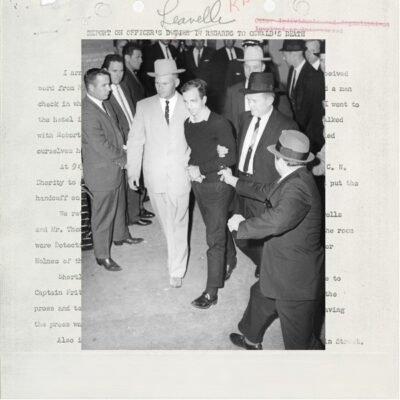
JFK Assassination Jim Leavelle Warren Commission Vertical File
$0.00 Add to Cart -
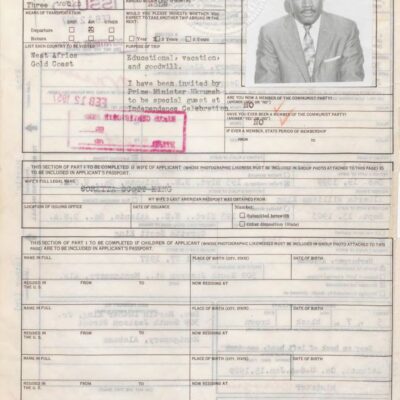
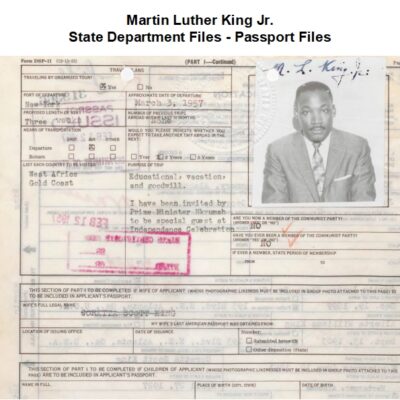
Martin Luther King Jr. State Department Records – Passport Files
$3.94 Add to Cart -
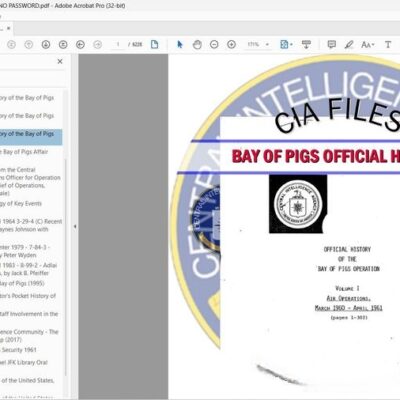
Bay of Pigs CIA Official History of the Bay of Pigs Operation
$19.50 Add to Cart -

President Ronald Reagan Assassination Attempt John Hinckley Jr. FBI Files
$19.50 Add to Cart